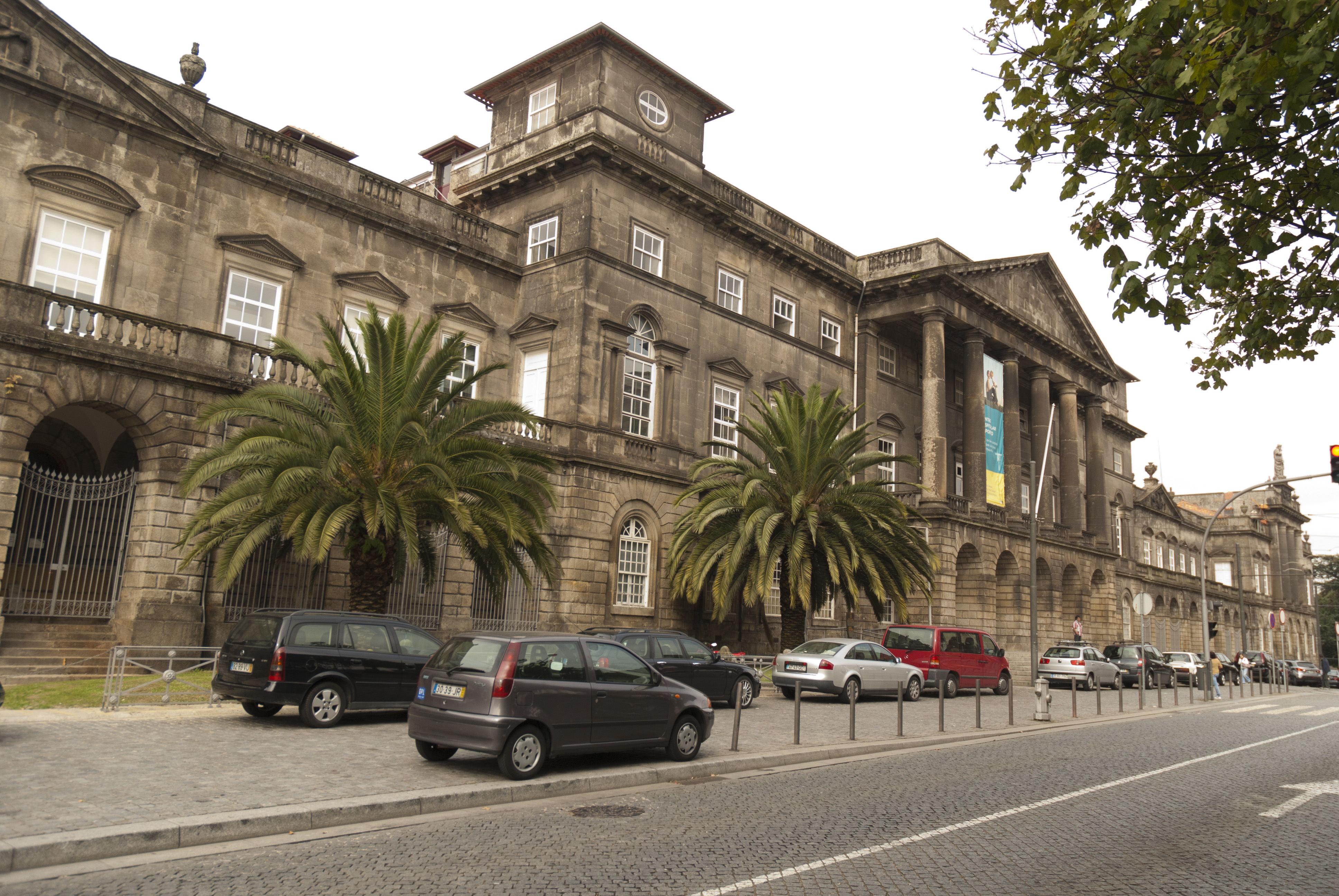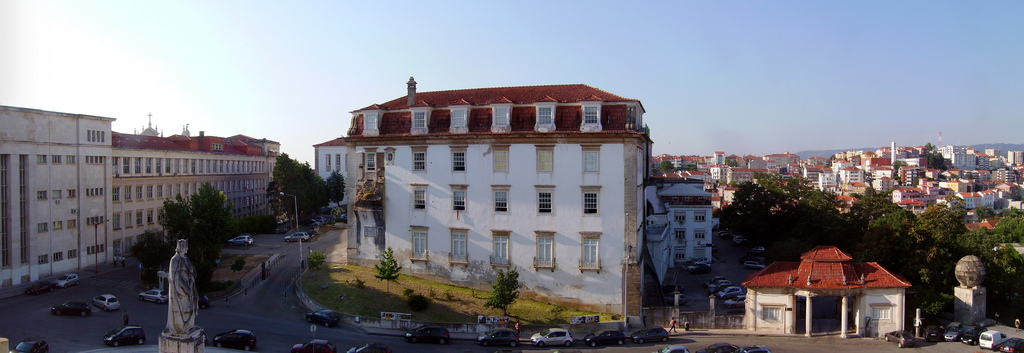|
Centro Hospitalar E Universitário De Coimbra
The Centro Hospitalar e Universitário de Coimbra (C.H.U.C) is a Portuguese public healthcare complex located in Coimbra, Portugal. It is composed by 6 medical institutions: Hospital da Universidade (the original University Hospital), Hospital Pediátrico de Coimbra (Pediatric Hospital), Hospital dos Covões, Maternidade Dr. Bissaya Barreto (maternity), Maternidade Dr. Daniel de Matos (maternity) and Hospital Sobral Cid (Psychiatrics Hospital). It's the biggest healthcare center in Portugal Portugal, officially the Portuguese Republic ( pt, República Portuguesa, links=yes ), is a country whose mainland is located on the Iberian Peninsula of Southwestern Europe, and whose territory also includes the Atlantic archipelagos of ..., with over 2000 beds and 8500 patients consulted per day. Buildings and structures in Coimbra Coimbra History of organisations based in Portugal Hospitals in Portugal {{portugal-stub ... [...More Info...] [...Related Items...] OR: [Wikipedia] [Google] [Baidu] |
Portuguese National Health Service
Healthcare in Portugal is provided through three coexisting systems: the National Health Service ( pt, Serviço Nacional de Saúde, SNS), special social health insurance schemes for certain professions (health subsystems) and voluntary private health insurance. The SNS provides universal coverage, although in 2012 measures were implemented to ensure the sustainability of the service by the introduction of user fees to be paid for at the end of treatments. In addition, about 25% of the population is covered by the health subsystems, 10% by private insurance schemes and another 7% by mutual funds. The Ministry of Health (Portugal), Ministry of Health is responsible for developing health policy as well as managing the SNS. The Health Regulatory Entity (ERS) is the regulatory agency, public independent entity responsible for the regulation of the activity of all the public, private and social healthcare providers. In 2019 the government proposes to scrap all fees, which constitute abou ... [...More Info...] [...Related Items...] OR: [Wikipedia] [Google] [Baidu] |
Coimbra
Coimbra (, also , , or ) is a city and a municipality in Portugal. The population of the municipality at the 2011 census was 143,397, in an area of . The fourth-largest urban area in Portugal after Lisbon, Porto Metropolitan Area, Porto, and Braga, it is the largest city of the Coimbra (district), district of Coimbra and the Centro Region, Portugal, Centro Region. About 460,000 people live in the Região de Coimbra, comprising 19 municipalities and extending into an area of . Among the many archaeological structures dating back to the Roman Empire, Roman era, when Coimbra was the settlement of Aeminium, are its well-preserved aqueduct (watercourse), aqueduct and cryptoporticus. Similarly, buildings from the period when Coimbra was the capital of Portugal (from 1131 to 1255) still remain. During the late Middle Ages, with its decline as the political centre of the Kingdom of Portugal, Coimbra began to evolve into a major cultural centre. This was in large part helped by the establ ... [...More Info...] [...Related Items...] OR: [Wikipedia] [Google] [Baidu] |
Hospitais Da Universidade De Coimbra
The ''Hospitais da Universidade de Coimbra'' or HUC (Hospitals of the University of Coimbra), is a university hospital that partners with the University of Coimbra, Portugal. This complex is known as a centre of research with a broad range of clinical services and medical specialties. It is a branch of the larger Centro Hospitalar e Universitário de Coimbra, a rebranded merged institution created during the eruption of the European sovereign debt crisis and the Portuguese economic and financial crisis in 2012. History In its early days, it used to function in two separated buildings which can be traced back to the 16th century. Part belonged to the College of St. Jerome begun in the 1560s. In 1836 it was handed over to the University of Coimbra, and twelve years later several hospital departments were transferred there. From then on it was known as the Hospital of St. Jerome. Several features bear witness to its history: the gateway built in the middle of the 18th century, which ... [...More Info...] [...Related Items...] OR: [Wikipedia] [Google] [Baidu] |
Portugal
Portugal, officially the Portuguese Republic ( pt, República Portuguesa, links=yes ), is a country whose mainland is located on the Iberian Peninsula of Southwestern Europe, and whose territory also includes the Atlantic archipelagos of the Azores and Madeira. It features the westernmost point in continental Europe, and its Iberian portion is bordered to the west and south by the Atlantic Ocean and to the north and east by Spain, the sole country to have a land border with Portugal. Its two archipelagos form two autonomous regions with their own regional governments. Lisbon is the capital and largest city by population. Portugal is the oldest continuously existing nation state on the Iberian Peninsula and one of the oldest in Europe, its territory having been continuously settled, invaded and fought over since prehistoric times. It was inhabited by pre-Celtic and Celtic peoples who had contact with Phoenicians and Ancient Greek traders, it was ruled by the Ro ... [...More Info...] [...Related Items...] OR: [Wikipedia] [Google] [Baidu] |
Buildings And Structures In Coimbra
A building, or edifice, is an enclosed structure with a roof and walls standing more or less permanently in one place, such as a house or factory (although there's also portable buildings). Buildings come in a variety of sizes, shapes, and functions, and have been adapted throughout history for a wide number of factors, from building materials available, to weather conditions, land prices, ground conditions, specific uses, prestige, and aesthetic reasons. To better understand the term ''building'' compare the list of nonbuilding structures. Buildings serve several societal needs – primarily as shelter from weather, security, living space, privacy, to store belongings, and to comfortably live and work. A building as a shelter represents a physical division of the human habitat (a place of comfort and safety) and the ''outside'' (a place that at times may be harsh and harmful). Ever since the first cave paintings, buildings have also become objects or canvasses of much artistic ... [...More Info...] [...Related Items...] OR: [Wikipedia] [Google] [Baidu] |
History Of Organisations Based In Portugal
History (derived ) is the systematic study and the documentation of the human activity. The time period of event before the invention of writing systems is considered prehistory. "History" is an umbrella term comprising past events as well as the memory, discovery, collection, organization, presentation, and interpretation of these events. Historians seek knowledge of the past using historical sources such as written documents, oral accounts, art and material artifacts, and ecological markers. History is not complete and still has debatable mysteries. History is also an academic discipline which uses narrative to describe, examine, question, and analyze past events, and investigate their patterns of cause and effect. Historians often debate which narrative best explains an event, as well as the significance of different causes and effects. Historians also debate the nature of history as an end in itself, as well as its usefulness to give perspective on the problems o ... [...More Info...] [...Related Items...] OR: [Wikipedia] [Google] [Baidu] |




.jpg)